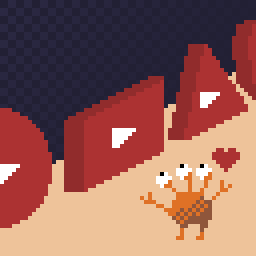The Youtuber is Jenna Stober, and she tells us right off that the problem with the games on display at the Nintendo Museum, many of which are rare or limited to playing at the museum itself, is that your ticket comes with ten “coins,” each game costs a number of them (up to four), there’s no way to get more except to get more tickets and visit more times, and there’s more cost in games than one ticket’s worth of coins. You can’t try everything, and if you pick games that aren’t fun, you’re just going to have a bad time, and that seems to be by design.
In her 11-minute video, the reviews, not all the games, but the ones most worthy of calling out as good, or meh, experiences, with enough detail to be able to figure out if your opinion just might differ. Given that tickets are limited, available mostly via drawing, and you can only even use cards that use a “3D Secure authentication service,” bleh, it’s really good to know what to focus on before you arrive at your date-and-time-limited ticket appointment.
The video’s title says it’s a review of “(almost)” every game there, but it doesn’t say which games she didn’t review. No explanation is given as to why.
The games she covers:
- Shigureden, a card-matching game that hearkens back to Nintendo’s roots as a playing card company
- Game & Watch games playable via your shadow, Manhole and Ball
- Ultra Hand (an extendable arm toy originally designed by Gunpei Yokoi) demonstration and play, pretty cheap at one coin
- Ultra Machine (a mechanical wiffle-ball batting pitcher also designed by Yokoi), another physical toy, allowing you to wreak playful havoc by allowing you to hit balls towards objects in a simulated living room, some of them would be breakable in real life; seems like Nintendo is poking fun at the destructiveness of their own past products; also cheap at two coins, and there’s even different rooms to play in
- Big Controller is just playing emulations of various Nintendo games using a gigantic controller (she presumably makes an error by saying one of them is a Playstation controller, but I haven’t been so maybe she’s right), they require two people to operate and if you’re alone they may (or may not?) supply a staffer to play with you
- Love Tester, a device to test your fake compatibility with another person, and another Yokoi invention, but this is more of a number of games designed around the idea of the thing
- Retro Arcade’s review says you can play “NES, SNES or Playstation games,” which also seems like a fairly big error (maybe she meant to say N64?), but this is just playing Nintendo products, and via emulation too, which she points out
- Zapper and Scope is a large-scale multiplayer co-op light gun game; unlike Ultra Machine you aim at a screen instead of physical objects; this is the most expensive game at four coins, but also short
- Hanafuda, the classic Japanese card game, also a reference to Nintendo’s past; intrinsically two-player and best played if you brought a friend, though an employee will play if you’re sad and alone; BTW, if you want to try this without visiting the museum in Japan, the DS version of Clubhouse Games has Hanafuda included as one of its many traditional games, and will even tell you the rules, supply a computer opponent for you, and not tell you which card to play.










